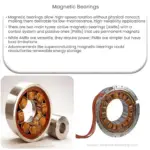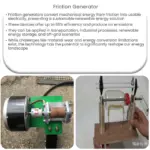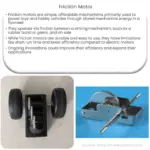Explore the five most common types of magnetic bearings: AMBs, PMBs, HMBs, SMBs, and PDD. Understand their unique features and applications.
Understanding the Five Most Common Types of Magnetic Bearings
Magnetic bearings stand out as one of the most innovative technologies in the world of mechanical engineering. They are primarily used to support loads, reducing friction in the rotating parts of machines. Below, we delve into the five most commonly used types of magnetic bearings.
1. Active Magnetic Bearings (AMBs)
Active Magnetic Bearings are the most common type of magnetic bearings. AMBs consist of electromagnets that are controlled electronically. By constantly adjusting the current in the electromagnets, AMBs can maintain a stable position of the rotor, without physical contact, eliminating wear and tear.
2. Passive Magnetic Bearings (PMBs)
Passive Magnetic Bearings use permanent magnets to create the magnetic field. Unlike AMBs, PMBs do not require an external power source or control system. They work based on the natural repulsion or attraction between magnetic fields. However, PMBs can only provide stability in two axes.
3. Hybrid Magnetic Bearings (HMBs)
Hybrid Magnetic Bearings combine the features of active and passive magnetic bearings. They use both controlled electromagnets and permanent magnets. The permanent magnets carry the weight of the rotor, while the electromagnets are used for stabilization.
4. Superconducting Magnetic Bearings (SMBs)
Superconducting Magnetic Bearings utilize the Meissner effect, where a superconductor in a magnetic field will create an opposing magnetic field, allowing for levitation. This type of bearing is commonly used in high-speed applications such as maglev trains and wind turbines.
5. Pseudo Direct Drive (PDD)
Pseudo Direct Drive is a type of magnetic bearing that uses a rare-earth magnet. In PDD, the rotor is directly connected to the load, reducing the need for a gearbox. It is a highly efficient system commonly used in wind turbines.
In conclusion, magnetic bearings are a technological marvel in the realm of engineering. Their ability to reduce friction, wear and tear, and their adaptability to various applications, make them indispensable in modern machinery. Whether it’s the self-regulating AMB or the highly efficient PDD, each type of magnetic bearing brings its unique advantages to the table.




